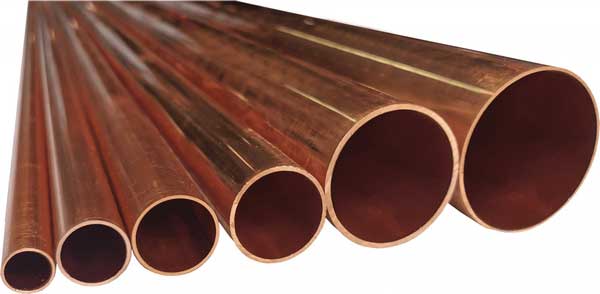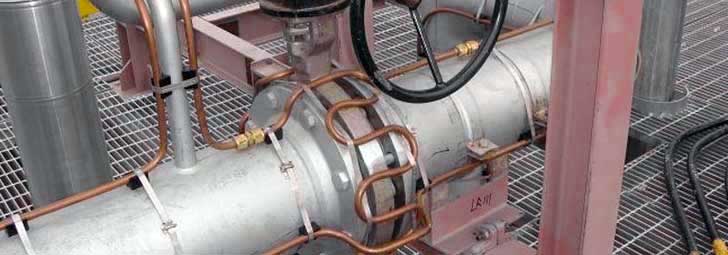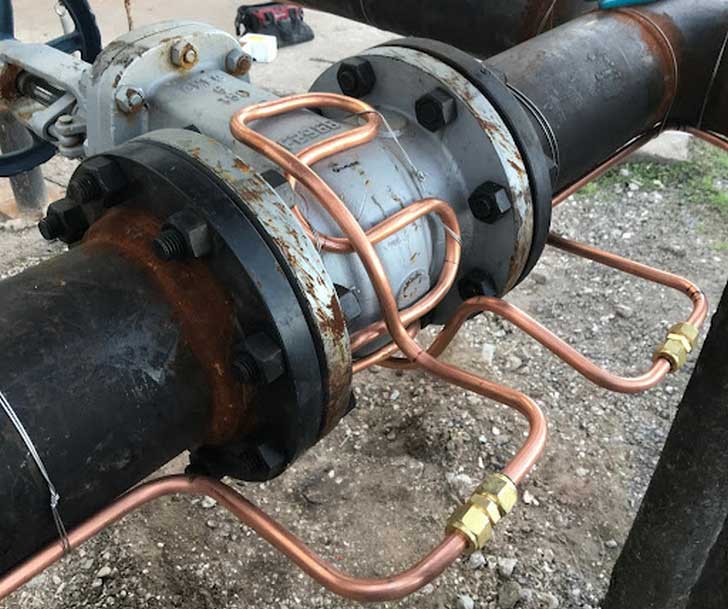 |
Copper tubes |
Copper tubes are a conduit widely used for plumbing, HVAC and certain industrial applications. Known for their durability, excellent thermal conductivity and corrosion resistance, copper tubes are ideal for both hot and cold water piping, heating systems and for specific applications in the oil and gas industry.
Their antimicrobial properties also contribute to their widespread use in providing clean water. Copper tubes come in different sizes and grades and meet different requirements and standards.

Typical applications in Plumbing
Copper tubes are widely used in plumbing systems because of their excellent properties and many benefits. Copper tubes are widely used to transport potable water in residential, commercial and industrial buildings.
Their corrosion resistance guarantees the purity of potable water because copper does not react with water and does not emit harmful substances.
The antimicrobial properties of Copper also help inhibit the growth of bacteria, making it ideal for potable water systems. Below are some common applications of copper tubes in plumbing..
- Potable Water Supply
- Fire Sprinkler Systems
- Underground Water Lines
- Solar Water Heating Systems
- Plumbing Fixtures and Fittings
- Recirculating Hot Water Systems
- Hot and Cold Water Distribution
Typical uses in industrial systems
Fire water system
Fire sprinkler tubes are often constructed of 90-10 Cu-Ni. Sprinkler and deluge pipes are not designed for continuous use, so 90-10 Cu-Ni is successfully used for all these sections. All necessary fittings for fire suppression systems are also readily available in compatible copper alloys.
Although Cu-Ni's have maximum velocities for continuous flow, higher velocities found in fire suppression piping can be maintained for the relatively short periods of operation.
Heat Tracing of Piping Systems
Heat-tracing systems can be divided into two major classes, electric and liquid. Liquid heat-tracing systems use a heating medium at elevated temperatures to transfer heat to a pipeline. The liquid is usually in a tube or small pipe attached to the pipeline to be traced.
If steam is the fluid to be traced, the condensate is returned to the boiler or discarded. If an organic heat transfer fluid is used, it is returned to a heat exchanger for reheating and recirculation. In general, heating of tracing fluids can be provided by waste heat from a process stream, fossil fuel combustion, steam or electricity.
Steam tracing is very simple in its principle of operation. When a product in a pipeline is at a higher temperature than the air surrounding it, heat will pass through the wall of the pipeline from the product to the surrounding air.
This heat loss will cause the temperature of the product to fall. Insulating the pipeline will significantly lower the rate at which heat is lost, but unfortunately, no insulation is 100% efficient.
Steam is a very efficient carrier of heat with a fixed relationship between its pressure and temperature. It can transport heat over long distances and gives up its heat at a constant temperature.
To make up the heat lost from the product pipeline, small bore steam tubes, or tracers, are attached to the product line. Heat from the steam passes into the product line and replaces the heat lost. The amount of heat transferred, and therefore the product temperature, can easily be controlled by simple self-acting control systems.
The same type of control can also be used in winterization applications, only allowing steam into the tracing line when the ambient temperature falls below a predetermined level.
Copper Steam Heat Tracing with screwed couplings
The image above shows a pipeline traced with copper tubing. It looks good, but one thing is seriously wrong. If that pipeline is going to be insulated, the screwed couplings will also be insulated; and that is not the intention.

I have experienced in the past that the insulation of hundreds of meters of pipeline had to be disassembled in order to find the leaking coupling. The costs were enormous, also in connection with scaffolding. So keep that in mind, and make sure that the steam tracing is installed correctly.
Cooling water system
This uses water from a reservoir or directly from the sea (in the case of direct cooling) and directs it to heat exchangers in the process systems. Typically, these heat exchangers cool gas under pressure in the gas compression train. Because temperatures can get very high in these systems, material selection can be limited.
The heat exchangers themselves are not usually made of Cu-Ni alloys because much of oil and gas production contains H2S, ranging from trace levels to significant concentrations that can lead to high corrosion rates and pitting.
Cooling systems have high demands for reliable water throughput. Seawater piping can use 90-10 Cu-Ni as long as adequate attention is paid to maximum velocities.
When an indirect chilled water system is used (with treated "low oxygen" water), Cu-Ni alloys can be used for the piping to the main seawater/treated water heat exchanger. Again, maximum velocities must be considered during design and operation.
Seawater system
Pressures in seawater systems are low (usually less than 20 bar). Temperatures are generally ambient conditions for seawater, which can vary considerably internationally, but can exceed 30°C in the Middle East and other tropical locations. Pipelines are generally 90-10 Cu-Ni to a maximum temperature of 100°C.
Speed limitations relative to pipeline diameter and good fabrication and commissioning practices optimize service life.
Valves and pumps are generally nickel-aluminum bronze (maximum exposure temperature is generally limited to 75°C).
Strainers and filters generally have enclosures of nickel-aluminum bronze or GRP and a combination of these materials for filter components.
Related Post(s)

The most common delivery forms for copper tubes are straight lengths, level wound coils and pancake coils...